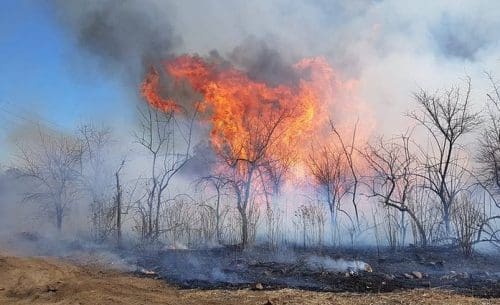 NEW South Wales livestock producers are being urged to be prepared for the threat of bushfires this summer, including low-risk holding areas.
NEW South Wales livestock producers are being urged to be prepared for the threat of bushfires this summer, including low-risk holding areas.
Local Land Services said vegetation has grown quickly following high rainfall across the state, bringing with it the risk of grass fires.
LLS animal biosecurity and welfare business partner Scott Ison said there are a range of measures landholders can undertake to make sure they minimise the threats and impacts of fire on their properties and on their animals.
“It’s always better to be safe than sorry when it comes to bushfires, so it’s important for landholders to ask how fireproof their animal emergency plans are.
“We recommend preparing adequate low-risk areas where stock can access water and where the potential bushfire fuel is minimal,” Mr Ison said.
“These paddocks should be large enough to allow stock to move away from the fire and ideally be protected by a road or a 3-6 metre ploughed fire break.
“The last thing we want to see is landholders lose stock, especially after they’ve invested so much in keeping them going through the drought,” he said.
To prepare for the threat of bushfires, LLS also recommends livestock owners:
- Create or review your Animal Emergency Plan and Farm Fire Plans. These can be downloaded from the SES and RFS websites, respectively.
- Ensure all your animals are identified, ideally with National Livestock Identification System ear tags, and that all horses, cats and dogs are microchipped.
- Consider keeping hay stored at multiple locations to minimise risk of loss. Ensure sheds are protected with a fire break or that fuel levels around them are minimised.
In a bushfire emergency, LLS works with the NSW Department of Primary Industries (DPI) to coordinate rescue, evacuation and emergency care for animals.
During last summer’s devastating bushfires, LLS and NSW DPI distributed more than 13,600 tonnes of fodder, 433 tonnes of sugar and 14 megalitres of water to keep livestock and bees alive.
NSW livestock producers are urged to seek further information and advice on how to prepare for bushfires from their LLS district veterinarian.

HAVE YOUR SAY